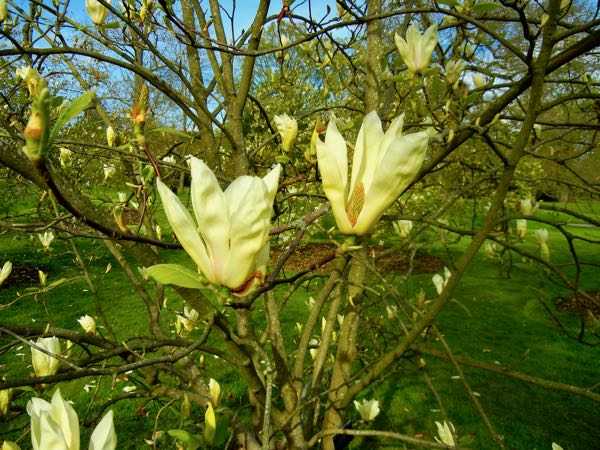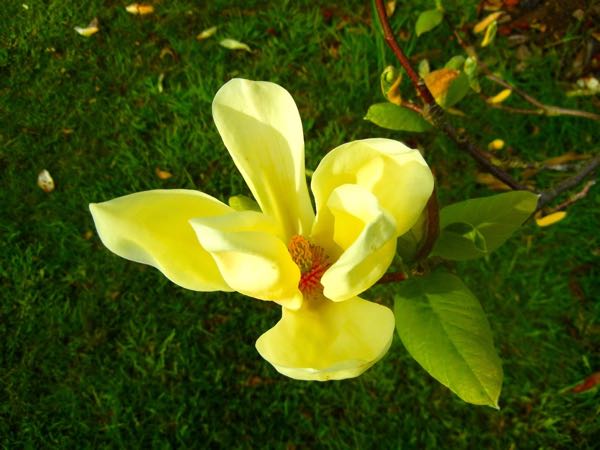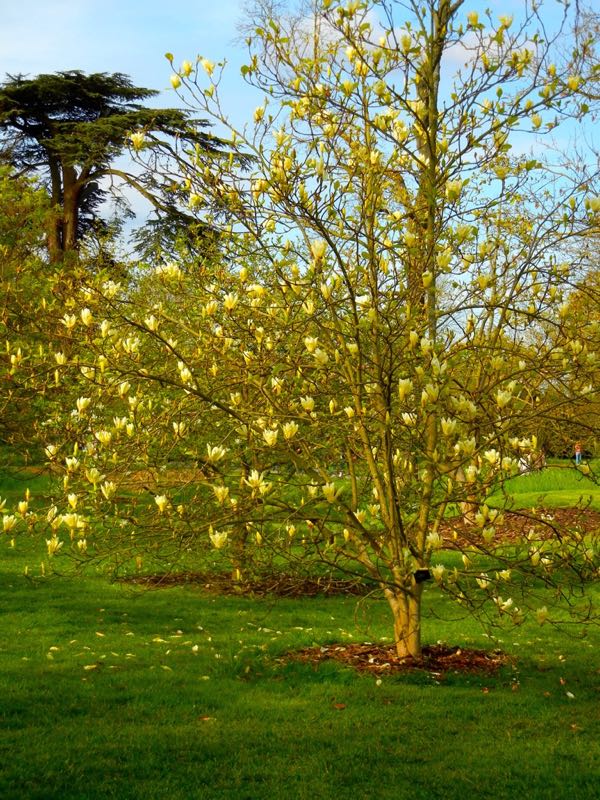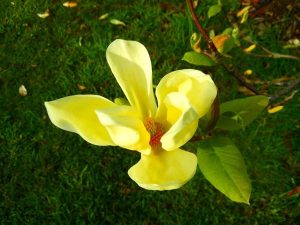Magnolia ‘Yellow Lantern’: A Stunning Magnolia Hybrid with Fragrant Yellow Flowers
Magnolia ‘Yellow Lantern’ is an exquisite magnolia hybrid, resulting from a cross between Magnolia acuminate var. subcordata and Magnolia soulangeana ‘Alexandrina.’ This upright, deciduous tree belongs to the Magnoliaceae family and can reach a height of approximately 30 feet (10 meters).
Enchanting Yellow Tulip-Shaped Flowers and Dark Green Foliage
One of the most captivating features of Magnolia ‘Yellow Lantern’ is its light yellow, tulip-shaped flowers. These blossoms adorn the tree in mid-spring, typically in April, creating a breathtaking display. Not only are the flowers visually striking, but they also emit a delightful fragrance, adding an extra sensory element to the garden. Following the flowering season, the tree’s oblong or ovate leaves emerge. The foliage showcases a rich, dark green hue, providing an attractive backdrop for the vibrant blooms.

Ideal Growing Conditions for Magnolia ‘Yellow Lantern’:
To ensure optimal growth and blooming of Magnolia ‘Yellow Lantern,’ it is recommended to plant it in a location that receives full sun or partial shade. It’s important to shelter the tree from cold winds, as it can be sensitive to extreme weather conditions. The ideal soil for Magnolia ‘Yellow Lantern’ is humus-rich, fertile, and moist, while also maintaining good drainage. It thrives in neutral to slightly acidic soil pH levels.
Propagating and Pruning Magnolia ‘Yellow Lantern’
Propagation of Magnolia ‘Yellow Lantern’ can be done through softwood cuttings in late spring or early summer, or hardwood cuttings in autumn. It’s crucial to avoid late frosts, as they can potentially damage the delicate flowers.
When it comes to pruning, Magnolia ‘Yellow Lantern’ typically requires minimal intervention. Light pruning in the summer is sufficient, primarily aimed at removing dead or damaged branches. It’s worth noting that this magnolia hybrid has a fleshy root system, which makes transplanting challenging and increases the risk of root damage. Therefore, it’s best to choose a suitable permanent location for the tree from the outset.
Potential Pests and Diseases
While generally robust, Magnolia ‘Yellow Lantern’ may still face certain pests and diseases. Scale insects, coral spots, phytophthora root rot, and honey fungus are among the potential issues to watch out for. Regular monitoring of the tree’s health, prompt action in case of infestation or disease, and appropriate preventive measures, such as providing good air circulation and avoiding over-watering, can help maintain the tree’s vitality.
By carefully tending to the specific requirements of Magnolia ‘Yellow Lantern,’ gardeners can enjoy the splendid sight of its fragrant yellow flowers, creating a visually captivating and aromatic addition to their outdoor space.




